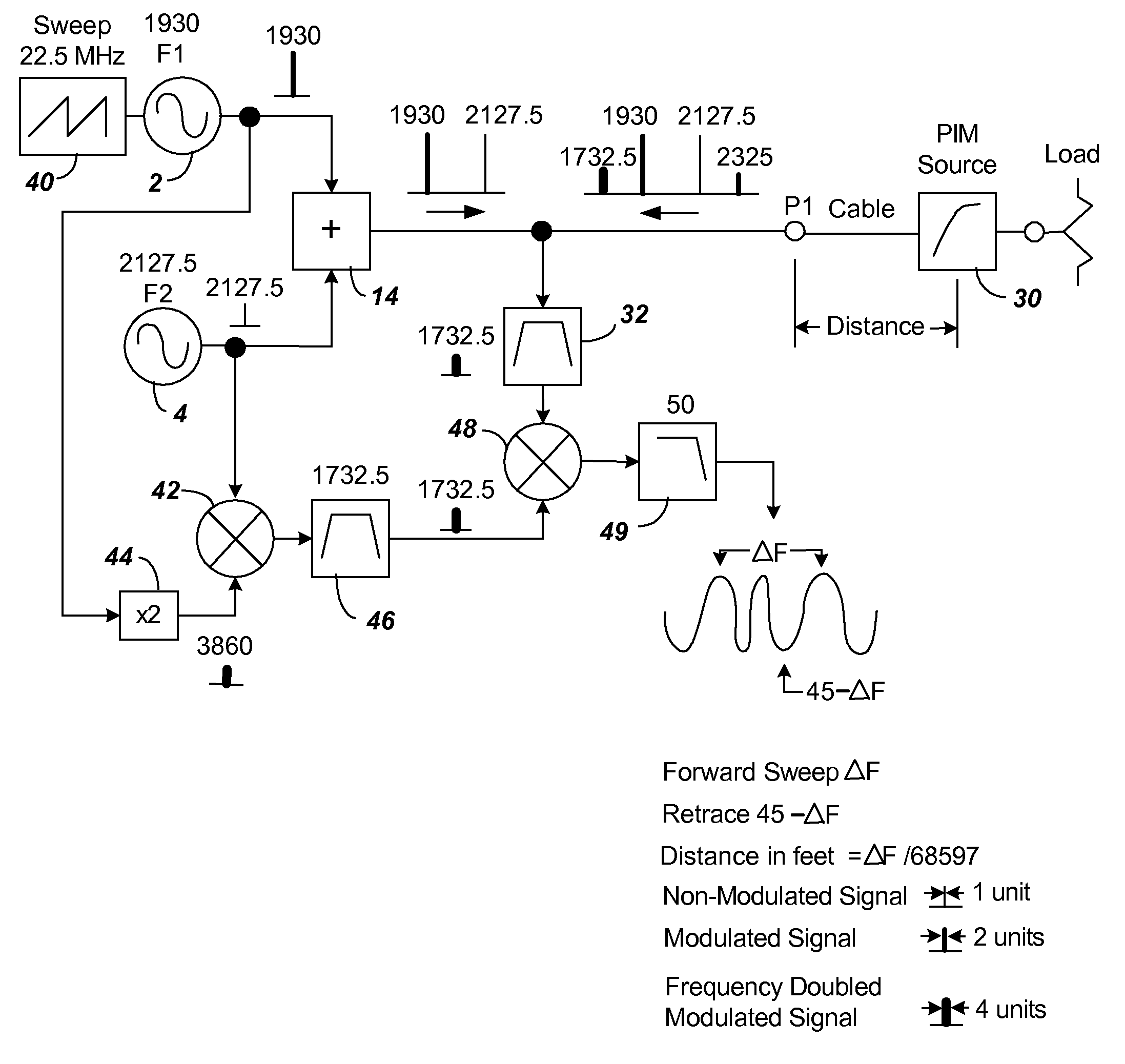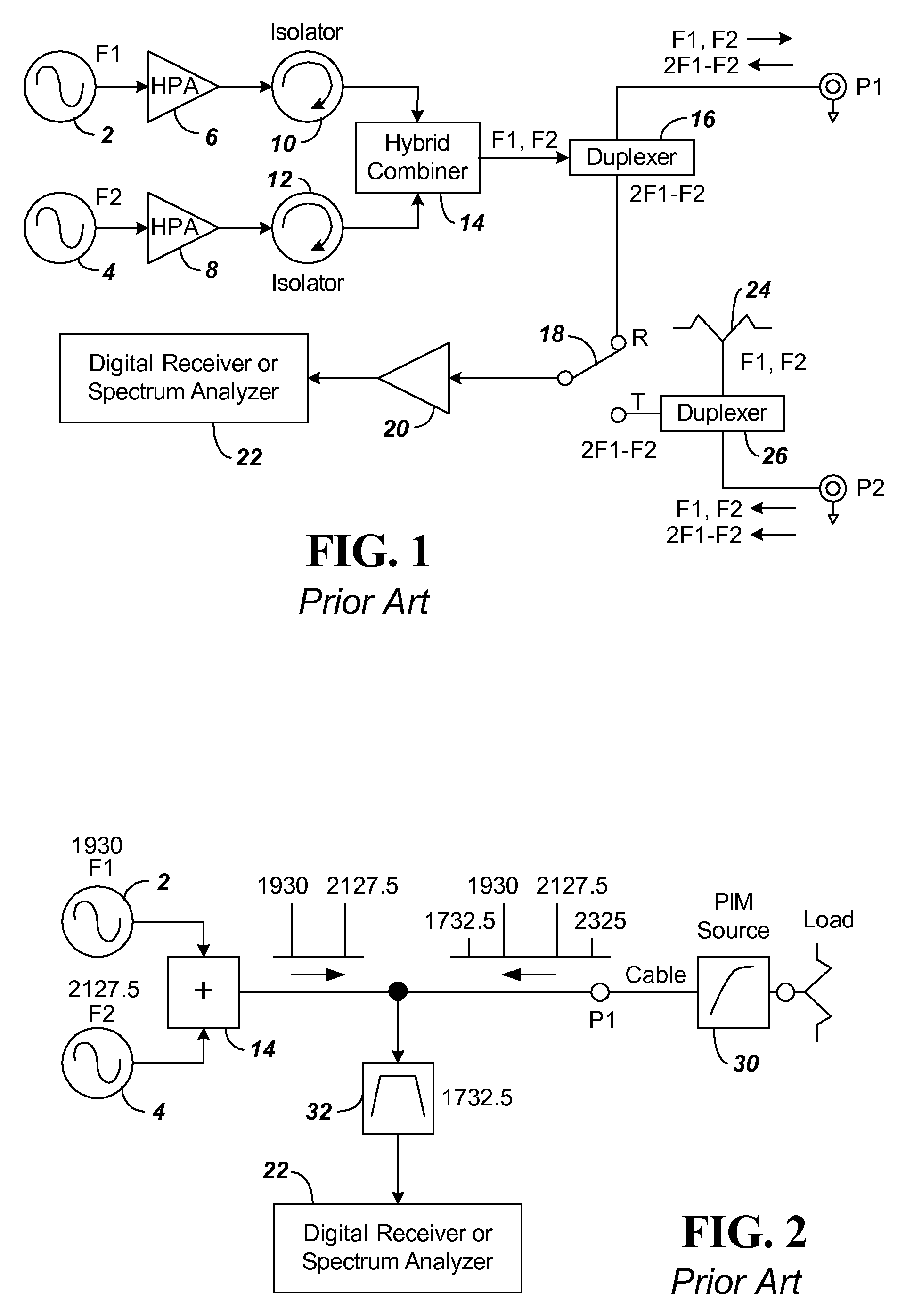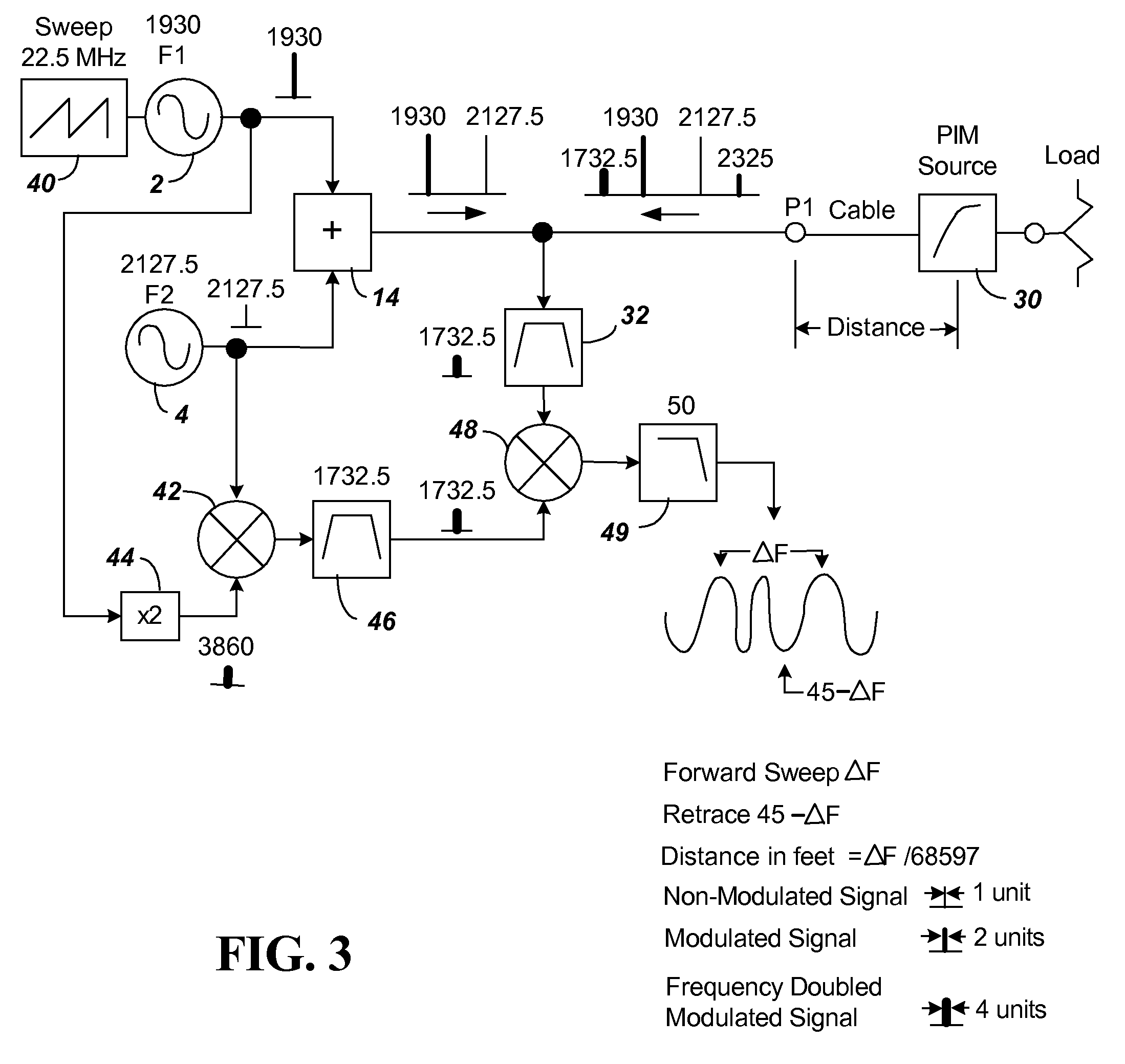Calibrated two port passive intermodulation (PIM) distance to fault analyzer
a passive intermodulation and fault analyzer technology, applied in the direction of transmission monitoring, receiver monitoring, instruments, etc., can solve the problems of unwanted additional signals, especially troubling, and achieve the effect of reducing the number of signals
- Summary
- Abstract
- Description
- Claims
- Application Information
AI Technical Summary
Benefits of technology
Problems solved by technology
Method used
Image
Examples
Embodiment Construction
[0027]FIG. 3 shows the block diagram of components of a first embodiment of the present invention using FM-CW as a means of determining distance in a PIM measurement device. The FM sweep is introduced using sweep generator 40. The sweep generator 40 is connected to F1 source 2. For purpose of illustration, the sweep generator 40 is shown creating a 1.4844 uS period saw tooth causing a ±11.25 MHz modulation (ranging 22.5 MHz as shown) that is added to F1 of source 2. The FM sweep signal F1 and the fixed signal F2 when modified by the PIM source will produce the additional signals 2*(F1+FM)−F2 and 2*F2−(F1+FM). The delayed in time (distance) signal 2*(F1+FM)−F2 will be mixed with an internally generated non delayed in time (distance) signal 2*(F1+FM)−F2 to produce the desired measurement signal ΔF. The ΔF signal represents 68597× distance in feet. The distance to fault from P1 can, thus, be determined by distance in feet=ΔF / 68597
[0028]The circuitry of FIG. 3 has components added to ac...
PUM
 Login to View More
Login to View More Abstract
Description
Claims
Application Information
 Login to View More
Login to View More - R&D
- Intellectual Property
- Life Sciences
- Materials
- Tech Scout
- Unparalleled Data Quality
- Higher Quality Content
- 60% Fewer Hallucinations
Browse by: Latest US Patents, China's latest patents, Technical Efficacy Thesaurus, Application Domain, Technology Topic, Popular Technical Reports.
© 2025 PatSnap. All rights reserved.Legal|Privacy policy|Modern Slavery Act Transparency Statement|Sitemap|About US| Contact US: help@patsnap.com



